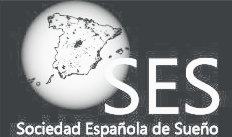Assessment of oximetry-based statistical classifiers as simplified screening tools in the management of childhood obstructive sleep apnea
Crespo A, Álvarez D, Kheirandish-Gozal L, Gutiérrez-Tobal GC, Cerezo-Hernández A, Gozal D, Hornero R, Del Campo F. Sleep Breath. 2018 Feb 16
Abstract
PURPOSE: A variety of statistical models based on overnight oximetry has been proposed to simplify the detection of children with suspected obstructive sleep apnea syndrome (OSAS). Despite the usefulness reported, additional thorough comparative analyses are required. This study was aimed at assessing common binary classification models from oximetry for the detection of childhood OSAS. METHODS: Overnight oximetry recordings from 176 children referred for clinical suspicion of OSAS were acquired during in-lab polysomnography. Several training and test datasets were randomly composed by means of bootstrapping for model optimization and independent validation. For every child, blood oxygen saturation (SpO2) was parameterized by means of 17 features. Fast correlation-based filter (FCBF) was applied to search for the optimum features. The discriminatory power of three statistical pattern recognition algorithms was assessed: linear discriminant analysis (LDA), quadratic discriminant analysis (QDA), and logistic regression (LR). The performance of each automated model was evaluated for the three common diagnostic polysomnographic cutoffs in pediatric OSAS: 1, 3, and 5 events/h. RESULTS: Best screening performances emerged using the 1 event/h cutoff for mild-to-severe childhood OSAS. LR achieved 84.3% accuracy (95% CI 76.8-91.5%) and 0.89 AUC (95% CI 0.83-0.94), while QDA reached 96.5% PPV (95% CI 90.3-100%) and 0.91 AUC (95% CI 0.85-0.96%). Moreover, LR and QDA reached diagnostic accuracies of 82.7% (95% CI 75.0-89.6%) and 82.1% (95% CI 73.8-89.5%) for a cutoff of 5 events/h, respectively.


